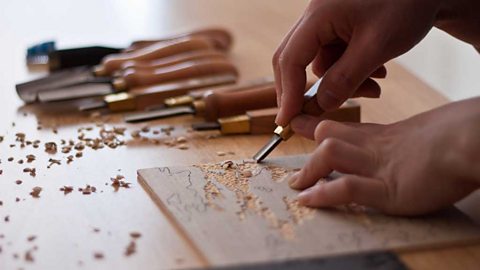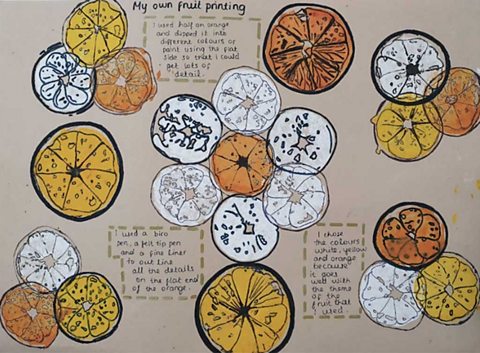Block printing process

Block printing - also called relief printing - is the process of carving patterns, shapes and designs into a 'block'. The block could be made of wood, acrylicA paint or ink made from a mix of pigment and a fast-drying liquid plastic plastic sheet, lino (linoleum) or metal.
Different materials are suited to different results:
- metal or acrylic sheets can produce fine lines with sharp detail
- wood and lino are well suited to bold images
The drawback with these materials is that each mark on the printing sheet will be printed, including mistakes.
Producing a print with a block

Block prints are usually made with oil-based ink.
- Draw a design onto a printing block.
- Carve out the design using cutting tools.
- Apply ink to a flat surface, eg an acrylic sheet. Work the ink with a roller until the roller is evenly covered and it becomes 'sticky'.
- Roll the ink onto the printing block. This will cover raised surfaces of the block with ink, leaving recessed areas ink-free.
- Turn the block face down onto the material or lay your material on top of the printing block.
- Use a clean roller or printing press to press the block onto the paper/surface of the print.

Try it out:
- Use a ballpoint pen to draw your design into old polystyrene packaging to create a printing block. (Clean your packaging before using it)
- Cut a potato in half and carve your design into it to create your own printing block.
- Carve your design into a sponge to create your own printing block.
Block printing uses

Block printing can be used for many purposes, including:
- fine art prints
- printing lengths of fabrics (look at examples of Indian wood block prints)
- greetings cards
It is used for small to medium batches of prints. Successful block prints range from bold, simple shapes and designs with limited colours, to more complicated designs using several colours.
Block printing is good for making positive and negative images and repeating patterns.